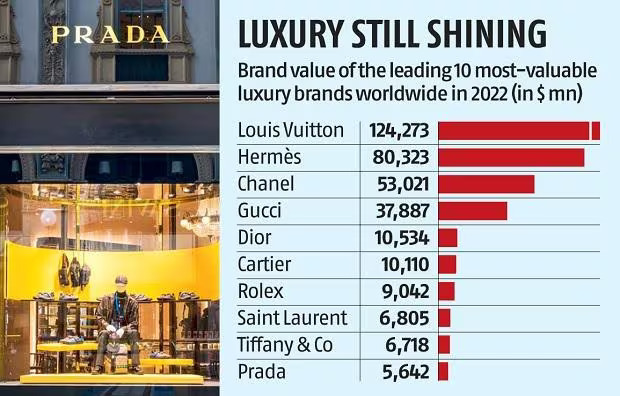Despite global instability, premium brands are still popular, according to a research.

In a world coping with inflation, war and bank runs, it seems counterintuitive that demand for luxury is still running hot.
Yet in recent days, two big designer brands reported bumper first-quarter sales. Paris-listed Hermès said its revenue grew 23 per cent from a year earlier in the three months through March, ahead of the 13 per cent analysts were expecting. At Louis Vuitton, sales grew 17 per cent in the same period. This was also much higher than analysts had forecast.
Even before these results, European luxury stocks were on a tear, gaining 23 per cent on average this year compared with a 14 per cent rise in the MSCI Europe index.
Many shareholders see Europe’s luxury brands as a good way to gain exposure to wealthy Chinese consumers, who are keen to shop again after almost three years of pandemic disruption. LVMH said sales in China at fashion brands such as Louis Vuitton, Christian Dior and Celine increased more than 30 per cent in the first quarter compared with a year earlier.
Ultrawealthy consumers are now propping up the luxury-goods industry, with signs of weakness lower down the income ladder. According to Bernstein analysis, people who spent up to 1,000 euros on designer goods in 2019 slashed their budgets in half in
The luxury industry has been surprisingly resilient in previous economic downturns. In the global financial crisis, the sector had two quarters of lower sales before it began to grow again, while global gross domestic product contracted for four.
But current trends are out of whack with long-term averages and might not be sustainable. In the decade before the pandemic, the luxury sector typically grew at double the rate of global GDP. This year, bullish analysts expect luxury industry sales to increase by 8 per cent to 10 per cent compared with the International Monetary Fund’s 2.8 per cent forecast for global growth. Other pockets of abnormally strong demand seen during the pandemic — such as for rented housing in the US — are beginning to unwind.
It will be harder for luxury brands to flatter their top lines with additional price increases after they hiked aggressively in 2021 and 2022. And unusually generous ad budgets — European luxury-goods companies spent 33 per cent more on marketing in 2022 than a year earlier — might not last either.
Demand is likely to become patchier among brands, so investors should be choosy. Last year, three companies — LVMH, Hermès and Richemont — took home 75 per cent of the industry’s incremental revenue, according to Bank of America analysis. When rivals report their results over the next few weeks, it will become clearer who is winning or losing market share.









